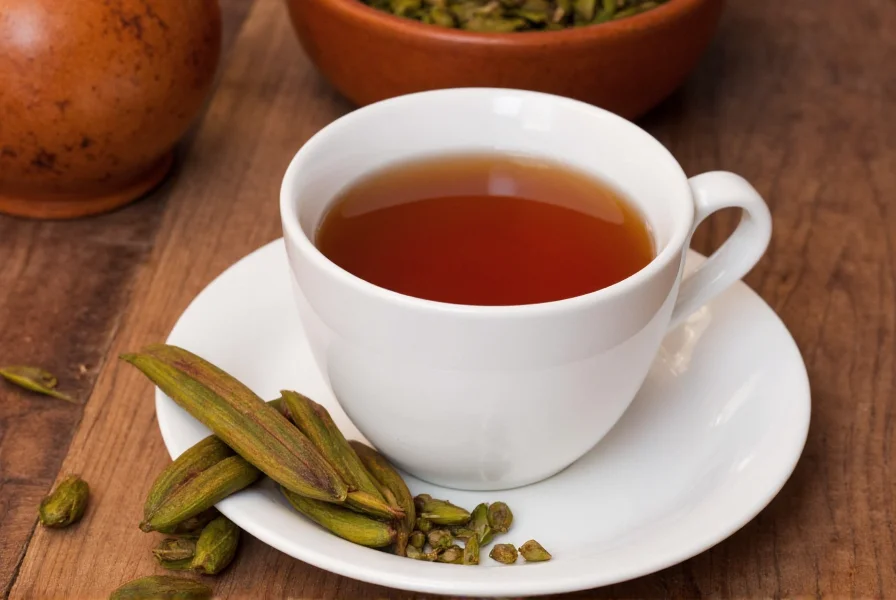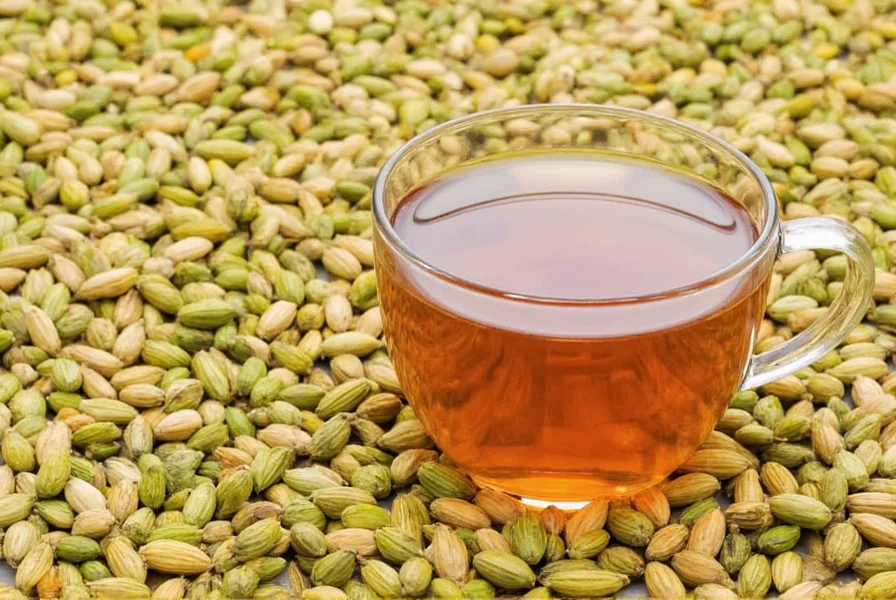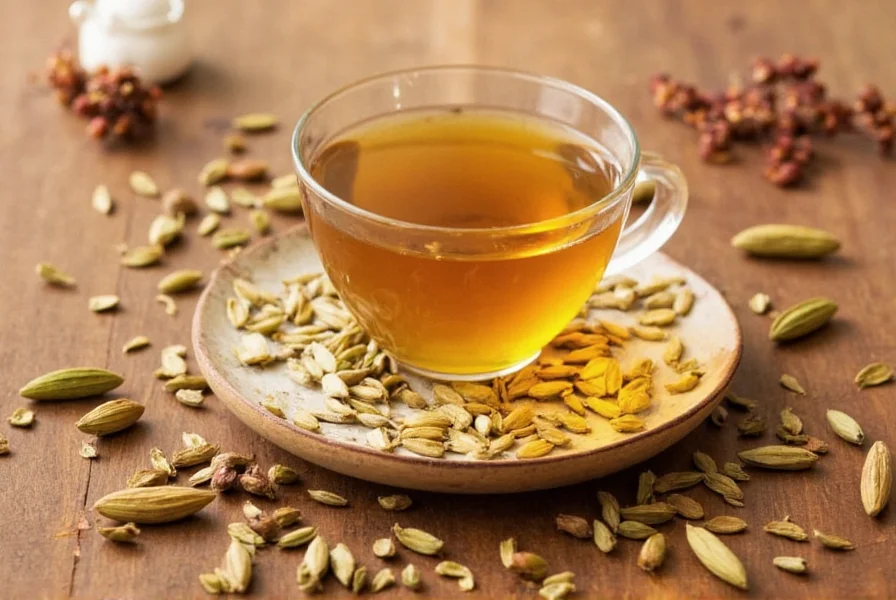Cardamom tea has been cherished for centuries across multiple cultures for both its distinctive flavor and potential wellness properties. This caffeine-free herbal infusion delivers a complex taste experience with citrus, floral, and slightly spicy notes that distinguish it from traditional black or green teas. Unlike many herbal teas, cardamom tea comes from the seeds of plants in the Elettaria (green cardamom) and Amomum (black cardamom) genera, which belong to the ginger family.
The Origins and Cultural Significance of Cardamom Tea
Cardamom's journey as a treasured spice began in the Western Ghats of southern India, where it still grows wild today. Ancient Egyptians used cardamom for oral hygiene, while Vikings carried it from Constantinople back to Scandinavia, where it remains integral to baked goods. In Middle Eastern cultures, cardamom tea serves as a traditional welcome beverage, often prepared strong and sweetened with dates or honey.
The spice traveled along ancient trade routes, becoming one of the world's most expensive spices by weight, second only to saffron. Traditional preparation methods vary significantly across regions: Indian chai wallahs often crush cardamom pods directly in the pot with other spices, while Scandinavian preparations tend to be more delicate, using whole pods to avoid bitterness.
Green Cardamom vs Black Cardamom: Understanding the Difference
When exploring green cardamom vs black cardamom for tea preparation, understanding their distinct characteristics proves essential:
| Characteristic | Green Cardamom | Black Cardamom |
|---|---|---|
| Flavor Profile | Citrusy, floral, eucalyptus notes | Smoky, camphorous, earthy |
| Best For | Delicate teas, sweet preparations | Robust blends, savory dishes |
| Preparation Method | Light crushing of pods | Whole pods, shorter steeping |
| Traditional Use | Middle Eastern coffee and tea | Indian masala chai, savory dishes |
Green cardamom (Elettaria cardamomum) offers a brighter, more floral profile ideal for standalone cardamom tea or delicate blends. Black cardamom (Amomum subulatum), with its distinctive smoky character from open-fire drying, works better in robust spice blends but can overpower a simple cardamom tea preparation.
How to Make Authentic Cardamom Tea
Mastering the cardamom tea preparation method requires attention to detail. The traditional approach involves:
- Select fresh, aromatic cardamom pods (green for milder flavor, black for stronger)
- Gently crack pods to release seeds without breaking them completely
- Use 2-3 pods per 8 ounces of water for balanced flavor
- Bring water to just below boiling (195°F/90°C)
- Steep for 5-7 minutes (longer for stronger flavor, but avoid bitterness)
- Strain and enjoy plain or with a touch of honey
For those wondering how to make cardamom tea with authentic flavor, avoid boiling the cardamom directly, as high heat can create unpleasant bitter compounds. Many traditional preparations include complementary spices like cinnamon, cloves, or ginger to create a more complex flavor profile.

Evidence-Based Health Benefits of Cardamom Tea
Research into the health benefits of cardamom tea reveals several promising areas, though more human studies remain needed. Current scientific understanding indicates:
- Digestive support: Cardamom contains compounds that may help relax gastrointestinal muscles and reduce spasms, potentially explaining its traditional use for bloating and indigestion
- Antioxidant properties: Studies show cardamom contains significant levels of antioxidants including terpenes and flavonoids that combat oxidative stress
- Oral health: The antimicrobial compounds in cardamom may help reduce bad breath and support oral hygiene
- Respiratory benefits: Traditional use for clearing airways may relate to cardamom's potential anti-inflammatory effects
A 2020 review in the Journal of Ethnopharmacology noted that while laboratory studies show promising antioxidant and anti-inflammatory effects from cardamom compounds, human clinical trials specifically examining cardamom tea for digestion remain limited. Most evidence comes from traditional use and preliminary research.
Potential Considerations and Side Effects
While generally safe for most people, certain individuals should exercise caution with cardamom tea. Understanding potential cardamom tea side effects helps ensure safe consumption:
- Those taking blood thinners should consult their physician, as cardamom may have mild anticoagulant properties
- People with gallstones should moderate intake, as cardamom may stimulate bile production
- Excessive consumption (more than 4-5 cups daily) may cause digestive upset in sensitive individuals
- Pregnant women should limit intake to moderate amounts as a precaution
The European Food Safety Authority considers cardamom safe for consumption at culinary levels, but therapeutic doses require professional guidance. When considering when to drink cardamom tea, many cultures traditionally consume it after meals to support digestion.
Selecting Quality Cardamom for Tea
Freshness dramatically impacts the flavor and potential benefits of your tea. Look for these quality indicators when selecting cardamom:
- Plump, intact pods with no cracks or holes
- Vibrant green color (for green cardamom) or dark brown (for black)
- Aromatic scent when lightly crushed
- Heavy pods indicating full seeds inside
Store cardamom pods in an airtight container away from light and heat. Whole pods maintain freshness significantly longer than pre-ground cardamom. For the best traditional cardamom tea recipe, use freshly cracked pods rather than pre-ground spice.

Incorporating Cardamom Tea into Daily Wellness
Unlike many herbal remedies, cardamom tea fits seamlessly into daily routines. Many people find value in drinking it:
- After meals to support digestion
- As a caffeine-free afternoon alternative to black tea
- As part of morning rituals for its invigorating aroma
- During cold seasons for respiratory comfort
The cardamom tea cultural significance across multiple traditions speaks to its versatility and enduring appeal. From the bustling chai stalls of Mumbai to the quiet tea rooms of Istanbul, this aromatic infusion continues to bridge cultural divides through shared appreciation of its distinctive flavor and potential wellness properties.
What are the main health benefits of drinking cardamom tea regularly?
Cardamom tea may support digestive health by relaxing gastrointestinal muscles, contains antioxidant compounds that combat oxidative stress, and has traditionally been used for oral hygiene due to its antimicrobial properties. Research suggests potential anti-inflammatory effects, though more human studies are needed to confirm specific health claims.
How does green cardamom differ from black cardamom when making tea?
Green cardamom offers a brighter, citrusy-floral flavor profile ideal for delicate teas, while black cardamom has a distinctive smoky, earthy character from open-fire drying. Green cardamom works better for standalone cardamom tea, while black cardamom is typically used in robust spice blends as it can overpower a simple preparation.
What's the proper way to prepare cardamom tea to avoid bitterness?
To avoid bitterness, don't boil cardamom directly. Gently crack the pods to release seeds, use 2-3 pods per 8 ounces of water, pour water at 195°F (90°C) rather than boiling, and steep for 5-7 minutes. Longer steeping times can extract bitter compounds, so timing matters for optimal flavor.
Are there any side effects or precautions for drinking cardamom tea?
Cardamom tea is generally safe but those taking blood thinners should consult a physician due to potential mild anticoagulant properties. People with gallstones should moderate intake as cardamom may stimulate bile production. Excessive consumption (more than 4-5 cups daily) may cause digestive upset in sensitive individuals.
When is the best time to drink cardamom tea for maximum benefits?
Many cultures traditionally drink cardamom tea after meals to support digestion. It also works well as a caffeine-free afternoon alternative to black tea, as part of morning rituals for its invigorating aroma, or during cold seasons for respiratory comfort. The timing depends on your personal wellness goals and cultural preferences.











 浙公网安备
33010002000092号
浙公网安备
33010002000092号 浙B2-20120091-4
浙B2-20120091-4